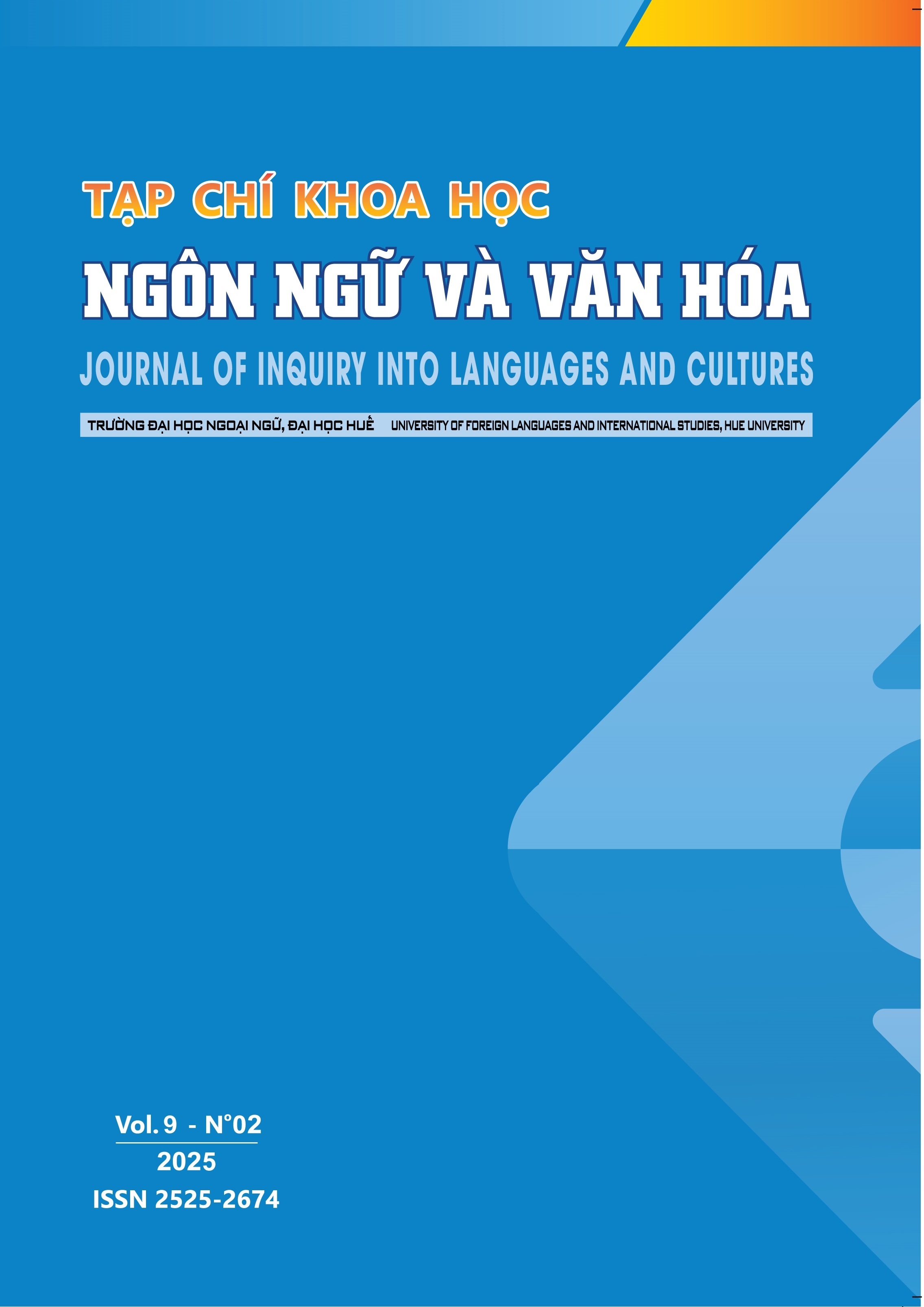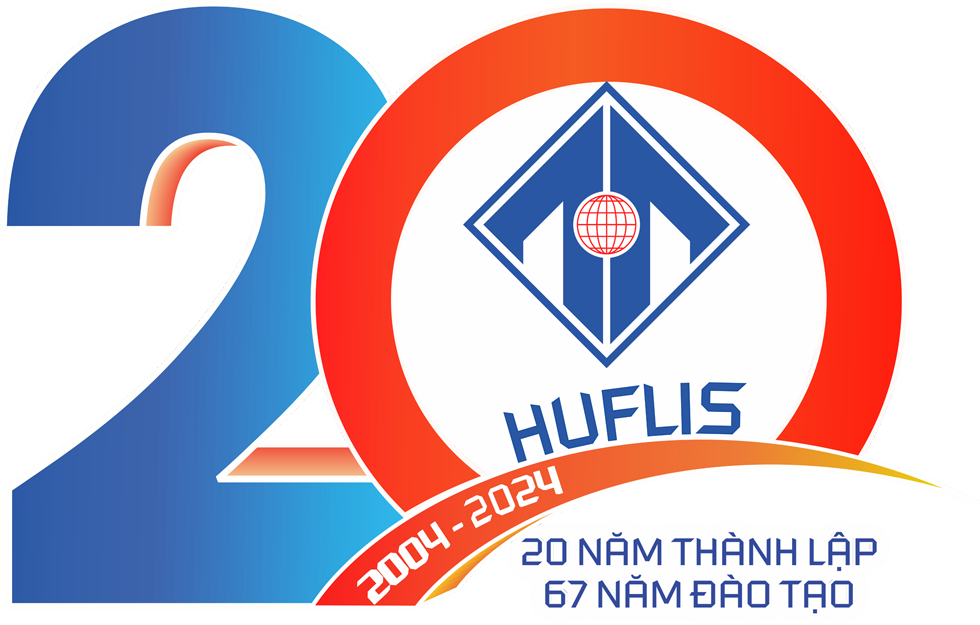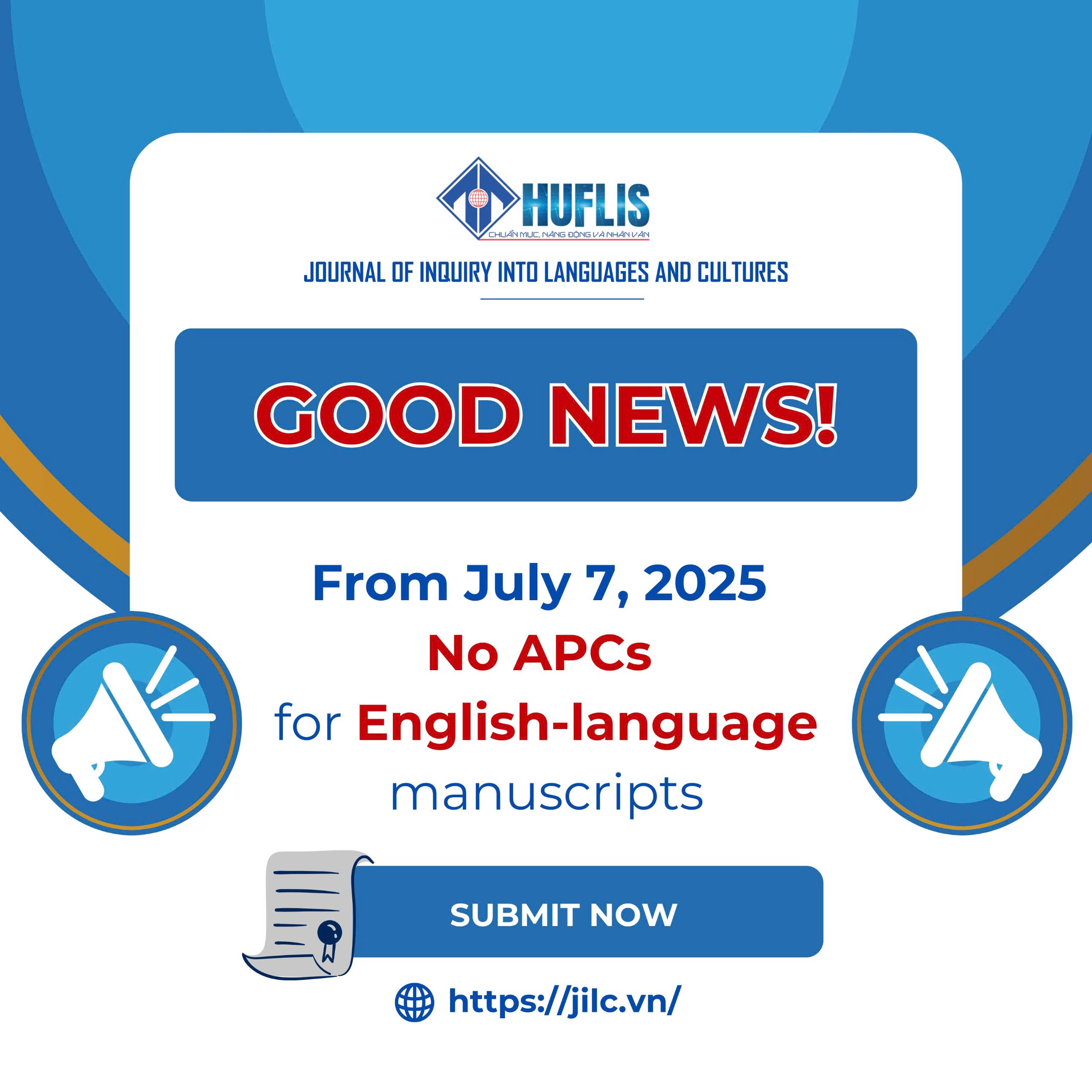LIÊN NGÔN SƯ PHẠM CỦA GIÁO VIÊN CÁC LỚP HỌC TIẾNG ANH DÀNH CHO HỌC SINH DÂN TỘC THIỂU SỐ Ở VIỆT NAM
DOI:
https://doi.org/10.63506/jilc.0902.322Từ khóa:
Liên ngôn sư phạm; chức năng sư phạm; học sinh dân tộc thiểu sốTóm tắt
Nghiên cứu này khám phá việc sử dụng liên ngôn sư phạm của giáo viên và các chức năng sư phạm của nó trong các lớp học tiếng Anh như một ngoại ngữ dành cho học sinh dân tộc thiểu số. Hai giáo viên từ hai trường trung học cơ sở ở một tỉnh thuộc khu vực Tây Nguyên của Việt Nam đã được quan sát trong sáu tiết học, trong đó lời nói của họ được ghi âm và sau đó họ được phỏng vấn riêng. Kết quả cho thấy các giáo viên đã sử dụng liên ngôn sư phạm một cách có chiến lược bằng cách luân phiên giữa tiếng Việt, tiếng Anh và các ngôn ngữ dân tộc thiểu số. Việc thực hành này được thực hiện theo nhiều cách kết hợp khác nhau, phổ biến nhất là giữa tiếng Việt và tiếng Anh; ít phổ biến hơn là giữa tiếng Việt và ngôn ngữ dân tộc thiểu số, giữa tiếng Anh và ngôn ngữ dân tộc thiểu số, và giữa cả ba ngôn ngữ. Liên ngôn sư phạm được sử dụng nhằm phục vụ các chức năng diễn giải và quản lý lớp học. Dữ liệu phỏng vấn cũng xác nhận rằng việc sử dụng liên ngôn sư phạm đã được lên kế hoạch một cách có chủ ý và một giáo viên thậm chí đã học ngôn ngữ mẹ đẻ của học sinh để nâng cao hiệu quả sử dụng liên ngôn. Những phát hiện này nhấn mạnh vai trò thiết thực của liên ngôn sư phạm trong việc hỗ trợ học sinh dân tộc thiểu số trong bối cảnh đa ngôn ngữ.
Số lượng Tải xuống
Tài liệu tham khảo
Braun, V., & Clarke, V. (2006). Using thematic analysis in psychology. Qualitative Research in Psychology, 3(2), 77-101. https://doi.org/10.1191/1478088706qp063oa
Bui, T. T. N., Ngo, N. T. H., Nguyen, H. T. M., & Nguyen, H. T. L. (2019). Access and equity in higher education in light of Bourdieu’s theories: A case of minority students in Northwest Vietnam. In C. S. Collins, H. Lee, & J. N. Hawkins (Eds.), Reforming Vietnamese higher education (pp. 149-169). Springer Nature. https://doi.org/10.1007/978-981-13-8918-4_9
Canagarajah, S. (2011). Codemeshing in academic writing: Identifying teachable strategies of translanguaging. The Modern Language Journal, 95(3), 401-417. https://doi.org/10.1111/j.1540-4781.2011.01207.x
Cenoz, J. (2009). Towards multilingual education: Basque Educational Research from an International Perspective, Bristol, Blue Ridge Summit. Multilingual Matters. https://doi.org/10.21832/9781847691941
Cenoz, J. (2017). Translanguaging in school contexts: International perspectives. Journal of Language, Identity & Education, 16(4), 193-198. https://doi.org/10.1080/15348458.2017.1327816
Cenoz, J., & Gorter, D. (2021). Pedagogical translanguaging (Elements in Language Teaching). Cambridge University Press. https://doi.org/10.1017/9781009029384
Chen, Y., Fang, F., & Zhang, W. (2024). Unpacking English language teachers’ perceptions and practices of translanguaging: A case study of secondary schools in China. Journal of English and Applied Linguistics, 3(2), 1–13. https://doi.org/10.59588/2961-3094.1122
Cong-Lem, N. (2025). Intuitive to strategic translanguaging: Insights from Vietnamese EFL classrooms. Profile: Issues in Teachers’ Professional Development, 27(1), 151-167. https://doi.org/10.15446/profile.v27n1.116309
Díaz, S. (2022). Methodological strategies for using stimulated recall in interpreting research. Onomázein: Journal of Linguistics, Philology and Translation, 55-71. https://doi.org/10.7764/onomazein.ne10.03
Driouch, A. (2022). Translanguaging as an inclusive pedagogical practice in early education classes. International Journal of Language and Literary Studies, 4(4), 76-96. http://doi.org/ 10.36892/ijlls.v4i4.1088
Galante, A. (2020). Pedagogical translanguaging in a multilingual English program in Canada: Student and teacher perspectives of challenges. System, 92, 102274. https://doi.org/10.1016/j.system.2020.102274
García, O., & Kleyn, T. (2016). Translanguaging with multilingual students: Learning from classroom moments. Routledge. https://doi.org/10.4324/9781315695242
García, O., & Wei, L. (2014). Translanguaging: Language, bilingualism and education (1st ed.). Palgrave Macmillan. https://doi.org/10.1057/9781137385765
Johnson, B. R., & Christensen, L. (2017). Educational research: Quantitative, qualitative, and mixed approaches (6th ed.). Sage Publications.
Juvonen, P., & Källkvist, M. (2021). Pedagogical translanguaging: Theoretical, methodological and empirical perspectives—An introduction. In P. Juvonen & M. Källkvist (Eds.), Pedagogical translanguaging: Theoretical, methodological and empirical perspectives (Vol. 132). Multilingual Matters. https://doi.org/10.21832/9781788927383
Khan, A. A., Nazir, N., Saleem, T., & Khalid, A. (2021). Pakistani higher education teachers’ perceptions on translanguaging practices in multilingual classroom. Ilkogretim Online - Elementary Education Online, 20(5), 1294-1307. https://doi.org/10.17051/ilkonline.2021.05.145
Le, V. C. (2022). Reframing ELT through a translanguaging lens. In MOET, Translanguaging as a pedagogical practice in English language classrooms: A practical guide for lower secondary schools (pp. 8-27). Ministry of Education and Training.
Lewis, G., Jones, B., & Baker, C. (2012). Translanguaging: Origins and development from school to street and beyond. Educational Research and Evaluation: An International Journal on Theory and Practice, 18(7), 641-654. https://doi.org/10.1080/13803611.2012.718488
Liando, N. V. F., Dallyono, R., Tatipang, D. P., & Lengkoan, F. (2023). Among English, Indonesian and local language: Translanguaging practices in an Indonesian EFL classroom. Indonesian Journal of Applied Linguistics, 13(1), 204-216. https://doi.org/10.17509/ijal.v13i1.58270
McCarthy, M. J., Matthiessen, C., & Slade, D. (2010). Discourse analysis. In N. Schmitt (Ed.), An introduction to applied linguistics (2nd ed., pp. 53-69). Hodder Education.
McKim, C. (2023). Meaningful member-checking: A structured approach to member checking. American Journal of Qualitative Research, 7(2), 41-52. https://www.ajqr.org/article/meaningful-member-checking-a-structured-approach-to-member-checking-12973
Miles, M. B., & Huberman, A. M. (1994). Qualitative data analysis: An expanded sourcebook (2nd ed.). Sage Publications, Inc. https://psycnet.apa.org/record/1995-97407-000
Ministry of Education and Training (MOET). (2014). Dispatch No. 792/BGDĐT-NGCBQLGD - English teacher competency framework. Hanoi: MOET.
Ministry of Education and Training (MOET). (2018). Circular: Promulgating general education program (Issued together with Circular No. 32/2018/TT-BGDĐT dated December 26, 2018, by the Minister of Education and Training). Hanoi: MOET.
Nguyen, C. D., & Tran, T. N. T. (2024). Languages and ethnic minority students’ access to education in Vietnam: Problems turned into opportunities from the perspective of translanguaging. In P. L. Ha, D. Bao, & J. Windle (Eds.), Vietnamese language, education and change in and outside Vietnam (pp. 159-180). Springer. https://doi.org/10.1007/978-981-99-9093-1_8
Nguyen, T. T. T., & Hamid, M. O. (2018). Bilingualism as a resource: Language attitudes of Vietnamese ethnic minority students. Current Issues in Language Planning, 19(4), 343-362. https://doi.org/10.1080/14664208.2017.1337922
Otheguy, R., García, O., & Reid, W. (2015). Clarifying translanguaging and deconstructing named languages: A perspective from linguistics. Applied Linguistics Review, 6(3), 281-307. https://doi.org/10.1515/applirev-2015-0014
Pham, T. K., & Vu, T. H. V. (2023). Vietnamese EFL secondary teachers’ translanguaging use and their perceptions. HCMCOU Journal of Social Sciences, 13(2), 37-54. https://doi.org/10.46223/HCMCOUJS.soci.en.13.2.2608.2023
Putri, F. I., & Rifai, I. (2021). Translanguaging practices in EFL classrooms: Teachers’ perspective. English Journal Literacy Utama, 6(1), 460-470. https://doi.org/10.33197/ejlutama.v6i1.155
Sahib, R. (2019). Translanguaging as a Pedagogical Strategy in EFL Classroom: A case study at Senior High School in Bulukumba Regency. ELT-Lectura, 6(2), 139-146. https://doi.org/10.31849/elt-lectura.v6i2.3032
Sapitri, N. M., Batan, I. G., & Myartawan, I. P. N. W. (2018). Functions of teachers’ translanguaging in the EFL classroom at two junior high schools in Singaraja. Lingua Scientia, 25(1), 29-36. https://doi.org/10.23887/ls.v25i1.18821
Seals, C. A., Newton, J., Ash, M., & Nguyen, T. B. T. (2020). Translanguaging and task-based language teaching: Crossovers and challenges. In Z. Tian, L. A. Medeiros, & J. J. Moore (Eds.), Envisioning TESOL through a translanguaging lens: Global perspectives (pp. 275–292). Springer. https://doi.org/10.1007/978-3-030-47031-9_13
Tsokalidou, R., & Skourtou, E. (2020). Translanguaging as a culturally sustaining pedagogical approach: Bi/Multilingual educators’ perspectives. In J. A. Panagiotopoulou, L. Rosen., and J. Strzykala (Eds.), Inclusion, education and translanguaging: How to promote social justice in (teacher) education? (pp. 219-235). Springer. https://link.springer.com/chapter/10.1007/978-3-658-28128-1_13
Wang, D. (2019). Multilingualism and translanguaging in Chinese language classrooms. Palgrave MacMillan. https://doi.org/10.1007/978-3-030-02529-8
Wei, L. (2018). Translanguaging as a practical theory of language. Applied Linguistics, 39(1), 9-30. https://doi.org/10.1093/applin/amx039
Zhang, R., & Chan, B. H. S. (2021). Pedagogical translanguaging in a trilingual context: The case of two EFL classrooms in a Xinjiang university. International Journal of Bilingual Education and Bilingualism, 2805-2816, 25(8). https://doi.org/10.1080/13670050.2021.1978383














